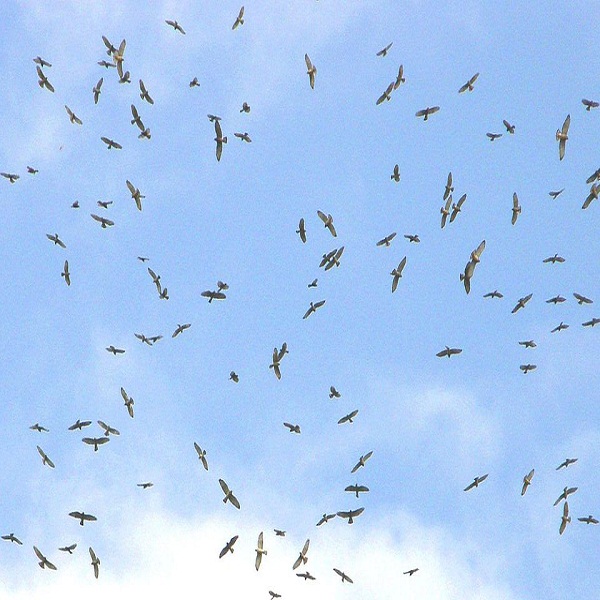To understand the future of space flight, Simone D’Amico says it helps to think about a flock of birds flying in a tight formation.
They are always in sync even as the flock abruptly veers in new directions, and they can do things individual birds cannot. For instance, as a unit, the flock is better at fending off predators, has more eyes with which to hunt for food and saves energy by reducing wind resistance.
What if tiny and inexpensive robotic satellites, each smaller than a shoebox, could do something similar? “That’s the definition of a distributed space system,” says D’Amico, an assistant professor of aeronautics and astronautics and director of the Stanford Space Rendezvous Laboratory, “when two or more satellites interact to do things that neither could do on its own.” For example, they could fly in a tight formation and collaborate to become, in effect, a distributed space telescope that could offer a lower-cost alternative to larger telescopes.
To work as a unit these miniature sat-bots need to have the onboard brains to arrange and reconfigure themselves in precise formations. D’Amico’s research is focused on the development of new algorithms for navigation, guidance and control of multiple nanosatellites. The sat-bots need to know where they are relative to each another (navigation), where to go (guidance) and how to change their trajectory to stay in formation (control).
It isn’t possible for ground stations to transmit step-by-step instructions to a swarm of nanosatellites flying at 17,500 miles per hour, in part because the lag time in communications would increase the risk of control errors and collisions. On top of that, the satellites need to adjust for unpredictable disturbances, such as solar radiation pressure or gravitational forces from poorly known celestial bodies, that can throw off their speed and trajectory.
Despite the challenges, D’Amico is undeterred. He has spent years developing the algorithms for self-navigating spacecraft. In 2017, he mapped out a two-satellite system that could hunt for planets outside the solar system. In 2021, D’Amico’s new navigation algorithms will be demonstrated by NASA’s Starling mission — a swarm of four closely orbiting nanosatellites in low Earth orbit.
Now, the National Science Foundation is funding two new distributed space system projects scheduled to launch in 2024. The first is called VISORS, short for Virtual Super-Resolution Optics with Reconfigurable Swarms. It will launch a trio of nanosatellites, working together as a distributed telescope, to capture the highest resolution pictures yet of small solar flares. Each satellite will be the size and shape of 3 Rubik’s cubes.
The second mission is called SWARM-EX, short for Space Weather Atmospheric Reconfigurable Multiscale Experiment. SWARM-EX will use a trio of small satellites to study “space weather” that results when solar wind interacts with the upper layers of Earth’s atmosphere. Space weather can cause geomagnetic storms and electromagnetic interferences that can disrupt navigation systems such as GPS, long-range communications systems and the electric grid. SWARM-EX and VISORS will mark the first time that nanosatellite swarms will be autonomously controlled and reconfigured at separations ranging from tens of kilometers to as close as 10 meters.
For D’Amico, this is just the beginning. Satellite swarms with distributed radar arrays have great potential for Earth science and for disaster monitoring. Inexpensive sat-bots could be used as space tow trucks to rendezvous with and refuel big, aging satellites, extending the lifespan of these billion-dollar platforms.
“Distributed space systems represent the natural evolution of satellite technology in the era of space commercialization,” he said.
Source: engineeringstanford










